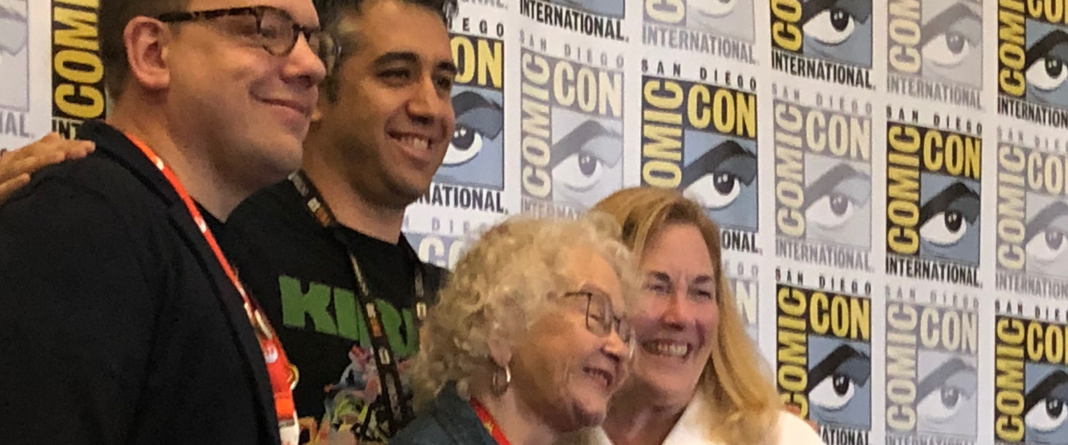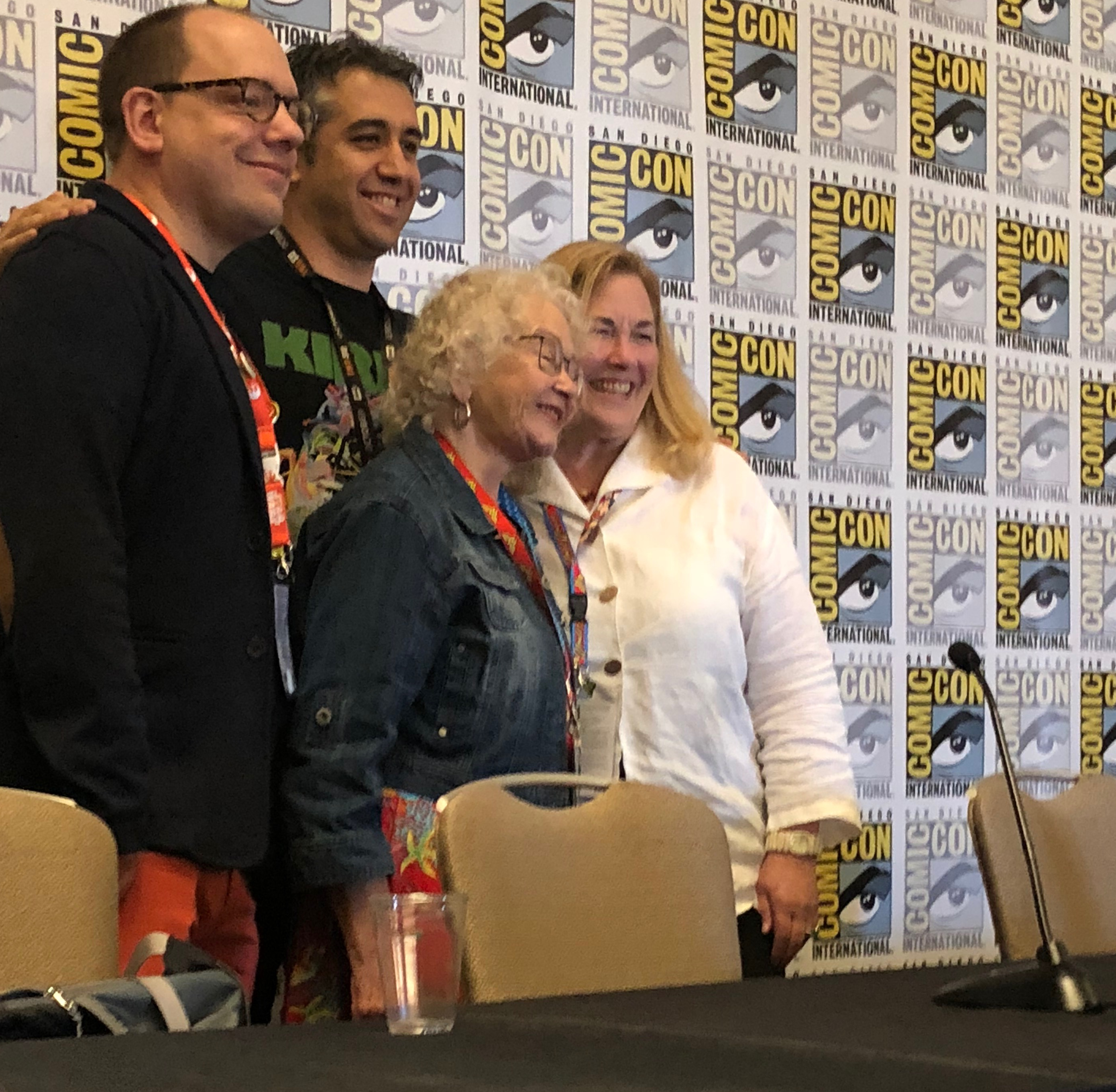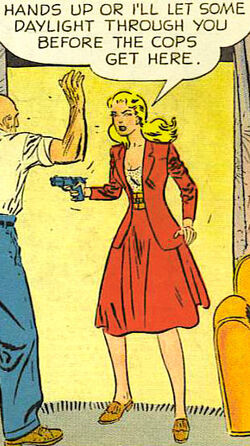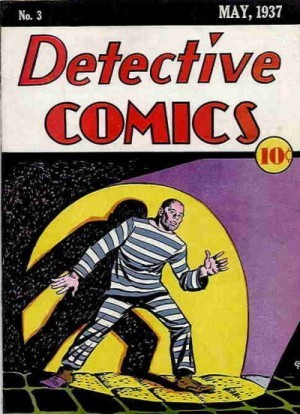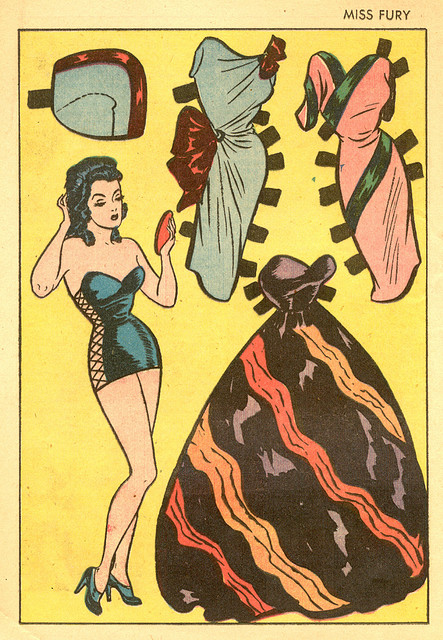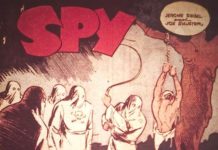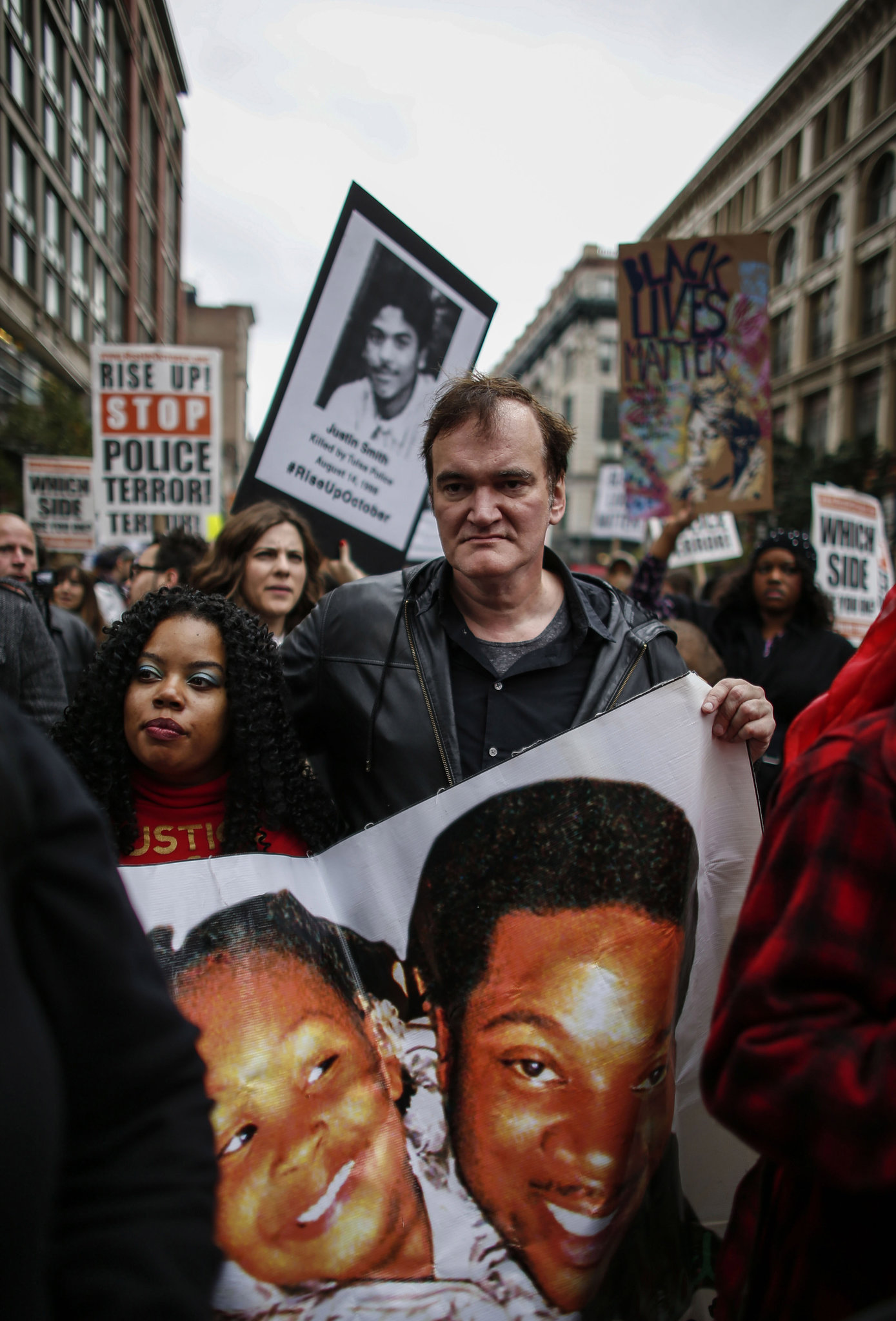The Sassy Smart Women of Pre-Superhero Comics panel took place on Thursday morning at San Diego Comic-Con. Nicky Wheeler-Nicholson, a historian whose paternal grandfather published many of the comics discussed during the panel, moderated the panel. The panelists were Trina Robbins, a cartoonist and historian, Alex Grand, founder of online fanzine Comic Book Historian, and Brad Ricca, author of the biography Super Boys: The Amazing Adventures of Jerry Siegel and Joe Shuster.
New Fun
Major Malcolm Wheel-Nicholson founded the publisher that would eventually become DC, started Detective Comics in 1937, and was responsible for hiring Jerry Siegel and Joe Shuster, the creators of Superman. But before the Caped Crusader appeared on the page, “the Major” published New Fun: The Big Comic Magazine #1, in 1935.
The Major drew upon his work running a newspaper syndicate, which included adapting Treasure Island into graphic form, as well as his experience writing pulp fiction novels, to bring the adventure story form and narrative format to comics.
Spicy Detective
Sally the Sleuth was one of the early comics starring a woman, first appearing in 1934. Many of the stories involved instances where she was able to solve cases beyond the abilities of her male peers.
“But there was still some of the more obvious sexist elements, like being saved by a male hero at the end of the story or being scantily clad,” said Grand.
“Comics made sense for that because you could do a lot of salacious stuff in text,” said Ricca. “But when you could show it in an illustration, that was just another way to sell it to [readers].”
“There was always some excuse for her to lose her clothes,” Robbins remarked.
Sandra of the Secret Service
Sandra of the Secret Service first appeared in the pages of New Fun in 1935 and embodied an evolution for women in detective comics. On top of every situation, she was a genuine action hero in the mold of James Bond. Unlike previous heroines, Sandra was self-sufficient. She didn’t require rescuing from the male lead at the last moment; on the contrary, the panel discussed a story in which she had to support a male counterpart who repeatedly passed out.
Slam Bradley
One of the early comics created by Siegel and Shuster and featured in Detective Comics was Slam Bradley. The stories frequently involved the title character beating everyone up and each story ended with Bradley kissing the love interest while his assistant, Shorty, looked on. In one story, a mystery on Broadway leads Bradley to encounter Joan Carter, a character who bears a striking resemblance to Lois Lane – both in appearance and personality.
Spy!
Bart Regan and Sally Norris were the stars of Spy!, but at first, the title reflected the fact that Regan was the star of the strip: Bart Regan: Spy! But by 1937 they had both became headliners of the story, and Regan’s name was dropped from the title.
While Norris began as a love interest of Regan’s who wouldn’t take “no” for an answer, she progressively evolved to become an adept spy. In some instances, Norris would solve the mystery while Regan looked on in awe.
Miss Fury
Miss Fury was a woman action character that debuted in 1939, predating Wonder Woman first appearance. June Mills created the character under the pseudonym Tarpé Mills, a name she used professionally because she feared her work wouldn’t be taken seriously if she were open about the fact that she was a woman. Robbins explained that the character was drawn “with mirrors” – the artist simply used her reflection in the mirror as a model. It was true right down to the cat, which even shared a name with the creator’s pet, Perry Purr.
The noir-influenced became increasingly popular. The creator would send pin-up style prints of Miss Fury in response to letters from fans in the military, and the character became so beloved that she was even depicted in nose cone art on airplanes during World War II.
Robbins noted the emphasis on fashionable clothing in the comic, as well (early in Mills’ artistic career, she worked as a fashion illustrator). Paper dolls of the stylish women in the action comic strip were eventually printed, which Robbins said was another hint that the comic’s target demographic included girls.
When the strip begins, Marla Drake is a socialite facing a fashion crisis: she’s attending a costume party but has learned another guest is wearing the same outfit she had planned to wear. Her maid (whose backstory as a refugee was to be revealed in later issues) suggests she wear a panther skin that had been brought back from an adventure by an uncle who was a famous explorer – but it turns out the skin is “cursed.”
“If there’s a curse, it consists of her immediately starting to have adventures,” said Robbins. “Because as she is driving on the way to the party in her panther skin, she’s intercepted by a guy who has just escaped from prison. The story goes on.”
What makes a Sassy Smart Woman?
The panelists were asked if there were a set of characteristics that qualified a character as a sassy, smart woman of pre-superhero comics.
“I think in some way they have to be in control of everything,” said Grand. “Whether it’s directly or indirectly, they’re always in control of the situation.”
Wheeler-Nicholson said a sense of humor and the ability to size up others were important defining characteristics.
“I think you do not need superpowers,” said Robbins. “Superpowers are a cop-out.”


